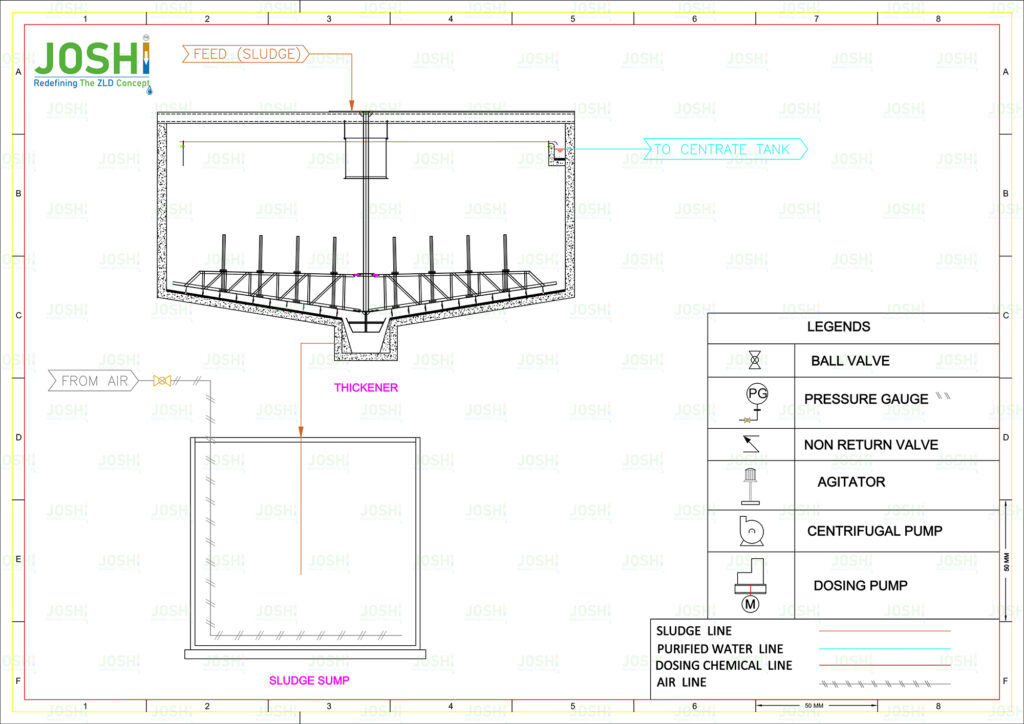Thickener
In wastewater treatment, a thickener is a device or process use to increase the solids concentration and decrease the volume of the sludge produce during the treatment process. The primary purpose of thickening is to reduce the overall volume of sludge for more efficient handling, storage, and disposal.
Process Steps
Thickeners work by allowing the solids in the wastewater to settle and consolidate, separating them from the liquid phase. This is achieve through the process of gravity sedimentation. The wastewater enters the thickener tank, where it is gently stirred or agitated to promote the settling of solid particles.
Gravity thickeners rely on the force of gravity to separate the solids, while DAF thickeners use air bubbles to float the solids to the surface. Centrifugal thickeners apply centrifugal force to accelerate the settling process.
Once the sludge has been thickening, it can be further processe or water to remove additional water content. Common methods of dewatering include mechanical means such as belt presses or filter presses, or by using processes like drying beds, centrifuges, or sludge drying systems.






